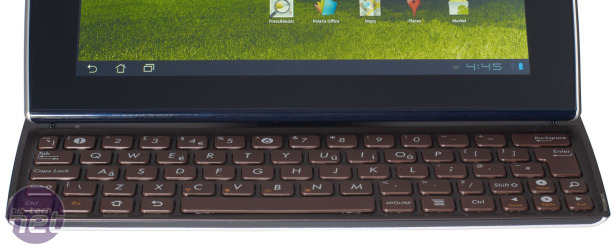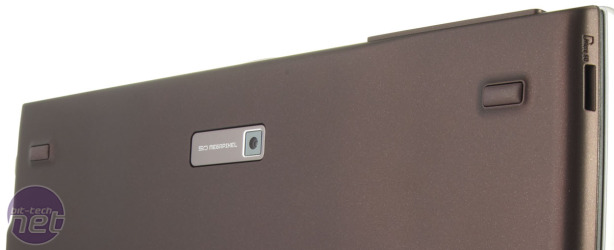Asus Eee Pad Slider Performance and Conclusion
Inside the novel Slider you’ll find 1GB of RAM and a dual-core, 1GHz Nvidia Tegra 2 CPU and GPU combination; a hefty processor that kept the Slider responsive and snappy. We ran the SunSpider 0.9.1 JavaScript benchmark on the device and saw the expected 2,240 seconds that a tablet of this configuration should manage. In Quadrant we saw a time of 1,582 seconds, again on the button for this kind of tablet.Battery life threw up no surprises either, as we measured a time of a little over nine hours of constant video playback with the screen at half brightness. That’s a good result considering the size and specs of the Slider, and is enough for lengthy flights or rail journeys.
The Slider was as responsive as we’d expect from a fast tablet running Android 3.1 – web pages loaded quickly and zooming, moving and scrolling was snappy. This is the standard experience for a 1GHz Tegra 2 tablet running Android 3.1, as Asus has barely tinkered with the OS. It has bundled a few apps, however, such as the Microsoft Office-compatible Polaris Office.
However, Polaris Office, and many other Android apps, are not designed to work with physical keyboards, and many of the keyboard shortcuts don’t work, leaving you switching back to the touchscreen controls frequently. This lack of keyboard shortcuts in most Android apps undermines the usefulness of the keyboard rather badly.
Don’t expect to be able to drop photos that you’ve taken on the 5 megapixel camera into documents or presentations either. Or at least, not without looking extremely amateurish. The auto focus is poor, resulting in fuzzy images that lack definition. Of course, wielding a tea-tray-sized tablet as a camera is also more comical than convenient.
Conclusion
The Eee Pad Slider is pretty much on the money for what it is – a 32GB Transformer (with keyboard attachment) costs around £430, so £450 for a sleeker, more complex alternative is reasonable. Remember that the Transformer’s base unit has a huge battery in it, which obviously adds to its price. The Slider's battery life and performance were predictably on a par with other similarly-specced tablets too.However, the Slider is much chunkier and heavier than dedicated tablets - or even the Transformer in tablet mode - due to the integrated keyboard and sliding mechanism. It’s therefore the keyboard upon which everything hangs. Unfortunately, though, the keyboard isn't as useful as it might first seem: you can't type particularly quickly on it and Android apps tend not to support keyboard shortcuts. This means you have to break your typing stance to prod and poke at the screen in an inaccurate and often slow way (when compared to keyboard shortcuts and a track pad).
This makes the Slider decent for text input, but not much better than a normal tablet for manipulating documents, spreadsheets, images and so on. If that's the kind of work you want it for, you'll get more use from a laptop or netbook at the moment.
Alternatively, if you're looking for a very portable device and don't plan to write more than a few lines of text every now and then, a dedicated tablet is a better option. The Samsung Galaxy Tab 10.1 is widely hailed as the best Android tablet for its thinness, lightness and build quality. It's also much sleeker and lighter than the Slider.
The Slider is therefore only a decent option for people that want to input sizeable (but not too sizeable) chunks of text or numbers with minimal need to manipulate said data, and only then if they're willing to accept that the device is much bulkier than a conventional tablet. That's extraordinary niche appeal, and most will be better off with more conventional tablets.
-
Performance21 / 25
-
Features17 / 20
-
Design19 / 30
-
Value16 / 25


MSI MPG Velox 100R Chassis Review
October 14 2021 | 15:04











Want to comment? Please log in.